/****************************************** * Cross browser cursor trailer script- By Brian Caputo ([email protected]) * Visit Dynamic Drive (http://www.dynamicdrive.com/) for full source code * Modified Dec 31st, 02' by DD. This notice must stay intact for use ******************************************/ A=document.getElementById B=document.all; C=document.layers; T1=new Array("/images/1.gif",12,9,"/images/2.gif",14,10,"/images/3.gif",15,11,"/images/2.gif",16,12,"/images/1.gif",17,14,"/images/kokopelli.gif",48,82) var offsetx= -15 //x offset of trail from mouse pointer var offsety= 7 //y offset of trail from mouse pointer nos=parseInt(T1.length/3) rate=50 ie5fix1=0; ie5fix2=0; rightedge=B? document.body.clientWidth-T1[1] : window.innerWidth-T1[1]-20 bottomedge=B? document.body.scrollTop+document.body.clientHeight-T1[2] : window.pageYOffset+window.innerHeight-T1[2] for (i=0;i ") } function createContainer(N,Xp,Yp,W,H,At,HT,Op,St){ with (document){ write((!A && !B) ? " " : ">"); write((HT) ? HT : ""); if (!Op) closeContainer(N) } } function closeContainer(){ document.write((A || B)?" ":" ") } function getXpos(N){ if (A) return parseInt(document.getElementById(N).style.left) else if (B) return parseInt(B[N].style.left) else return C[N].left } function getYpos(N){ if (A) return parseInt(document.getElementById(N).style.top) else if (B) return parseInt(B[N].style.top) else return C[N].top } function moveContainer(N,DX,DY){ c=(A)? document.getElementById(N).style : (B)? B[N].style : (C)? C[N] : ""; if (!B){ rightedge=window.innerWidth-T1[1]-20 bottomedge=window.pageYOffset+window.innerHeight-T1[2] } c.left=Math.min(rightedge, DX+offsetx); c.top=Math.min(bottomedge, DY+offsety); } function cycle(){ //if (IE5) if (document.all&&window.print){ ie5fix1=document.body.scrollLeft; ie5fix2=document.body.scrollTop; } for (i=0;i Kokopelli Legends & Lore
Kokopelli is a Hopi word meaning (roughly) wooden-backed; most of the familiar depictions of Kokopelli are copied from Hopi art, which in turn is derived from ancient Anasazi glyphs.
Ko-ko-pel-li n. {der. Hopi "kokopilau" (koko = wood, pilau = hump)} the humpbacked Flute Player, mythical Hopi symbol of fertility, replenishment, music, dance, and mischief.

Who Was Kokopelli?
Known as a fertility god, prankster, healer and story teller, Kokopelli has been a source of wonder throughout the country for centuries. Kokopelli embodies the true American Southwest, and dates back over 3,000 years ago, when the first petroglyphs were carved. Although his true origins are unknown, this traveling, flute-playing Casanova is a sacred figure to many Southwestern Native Americans. Carvings of this hunch-backed flute-playing figure have been found painted and carved into rock walls and boulders throughout the Southwest.
There are many myths of the famous Kokopelli. One of which is that he traveled from village to village bringing the changing of winter to spring; melting the snow and bringing about rain for a successful harvest. It is also said that the hunch on his back depicted the sacks of seeds and songs he carried. Legend also has it that the flute playing also symbolized the transition of winter to spring. Kokopelli’s flute is said to be heard in the spring’s breeze, while bringing warmth. It is also said that he was the source of human conception. Legend has it, everyone in the village would sing and dance throughout the night when they heard Kokopelli play his flute. The next morning, every maiden in the village would be with child. Whatever the true meaning of Kokopelli is, he has been a source of music making and dancing, and spreading joy to those around him. Even today, Kokopelli, with his hunchback and flute, is always welcome in our homes .
The legend of Kokopelli (pronounced "Coke-a-pellie") is well-preserved in ancient rock carvings and paintings dating back as far as 3,000 years. His legend however, is no less popular today - having survived more than one hundred generations. Below, is a compilation of stories collected through many hours of research. Certainly, you can find more stories (and images in Art) on the World wide web.
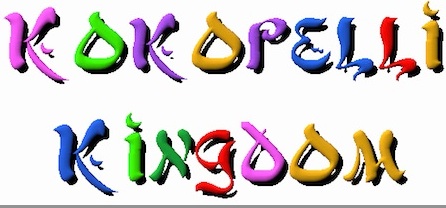
Kokopelli, distinguished by his hunch-back, dancing pose, and flute, is the only anthropomorphic petroglyph to have a name, an identity, and an established gender. His name may have been derived from the Zuni name for god ("Koko") and the Indian name for the Desert Robber Fly ("pelli"). His association with the Desert Robber Fly may stem from the fact that this insect too, has a hump on his back and a prominent proboscis. But, Kokopelli is known by other names, as well. To the Hopi, he is known as "Kokopilau" - meaning "wood hump". To others, he is known as Kokopele, Kokopetiyot, and Olowlowishkya. He also bears a nickname - "Casanova of the Cliff Dwellers", a tribute to his image and legend. Kokopelli's lesser known female counterpart is known as "Kokopelli Mana".
Kokopelli is a prehistoric deity depicted frequently in ancient rock art, estimated to be over a thousand years old.
Found throughout the mountains, deserts, and high plains of the southwestern United States. Frequently shown as a hump-backed flute player, this mythic being has survived in recognizable form from Anasazi times to the present. Kokopelli can also be found in various other places throughout the world such as SF hotels and hotels in Chicago Illinois as artwork or on different items. There is an appealing and timeless quality about Kokopelli which fascinates everyone, even in our modern technological age.
Other Names
Kokopele Kokopelli-mana or Kokopelmana (actually, Kokopelli's wife - Hohokam) Kokopeltiyo Kokopilau Neopkwai'i (Pueblo) Ololowishkya (Zuni)
Sacred Path Cards The Discovery of Self through Native Teachings By Jamie Sams
"If Kokopelli has lured you with his magical flute, it is time to listen to his song. This song is one of fertility. You are being asked to use your talents to create fertility in some area of your life. If things have been slow moving, Kokopelli's song is saying that whatever you intend to plant at this time will be very productive for you.
Planting seeds for the future takes effort on your part, so now is the time to use your skill and resources to make use of the magic. If you have a project to begin or an idea to develop, the timing couldn't be better. Shift away from any old, limiting ideas and move forward. The time is now - the power is you !"
The Ballad of Kokopelli?
A strange lonely figure stares out of the past where engraved by an artist in stone Held firm by the sand in which he is cast, these last thousand years quite alone. Could he be listening, trying to hear moccasins scuffing the butte? Bringing the people once again near to hear Kokopelli's sweet flute?
His image inscribed on a thousand rock faces from east to the great western sea; From Sonora's hot sun to the north glaciers bases, proclaiming this loved tutelary. Though powers possessed and methods employed are often in open dispute; One thing is agreed, the people did love to hear Kokopelli's sweet flute.
This stick figure man, with a hump on his back seemed always to cast a good feeling; His magic perhaps, taken out of his pack would comfort the sick and do healing. Whatever his talents, they surely were grand, a fact no one cares to refute, As people would come from afar in the land, to hear Kokopelli's sweet flute.
Kokopelli play for me, So my heart may sing, Magic flute of mystery, Fruitful dreams you bring. Song of Aztlan, Fertile Fire, Canyons of my mind, Sacred union, Heart to heart, Speaks of the Divine.
I am Kokopelli, All are Kokopelli. There is nothing that is not Kokopelli. I as Kokopelli am myself, in search of Kokopelli. When Kokopelli meets Kokopelli, Kokopelli is pleased. All who know the mystery of Kokopelli's play, Sense the future that is on it's way. Listen for the simple beauty of the flute, It hearkens the truth and enlightens the route. Go Kokopelli! Kokopelli.
Kokopelli's image varies as much as the legends about him, but he is generally depicted as a hunch-back flute player in a dancing pose with a festive crest on his head, and sometimes exhibiting male genitalia of exaggerated size. Images painted on ceramics ten centuries ago by the Hohokam (Arizona Pueblo) have become the prototype for modern representations.
Kokopelli's hump is sometimes represented as an arc which covers his entire back. Other times, it covers only the lower half of his back. His arms are usually represented as a "V" shape with his elbows pointing down toward the Earth. His forward leg is usually represented as a continuation of the curved line which outlines his hump. Likewise, his rear leg is usually represented as a continuation of the front line of his body. The flute, which is actually a nose flute, is usually represented as a straight line, or pair of straight lines. Sometimes, however, it is curved. Often, it has a bulbous end - like the end of a clarinet. An even number of crest elements are usually found on Kokopelli's head. In Pueblo culture, the festive crest represents the paired antennae of the katydid (grasshopper), with which he is sometimes associated. When being represented in the "Spirit World", he appears with feathers on his head. In other depictions, the crest on his head represents rays of light.
When present, Kokopelli's phallus is unusually long and erect, symbolizing the fertile seeds of human reproduction. It usually projects upward from the lower body and is sometimes only represented as a single line or arrow. His phallus is clearly depicted in a thousand year old bowl displayed at Mesa Verde National Park. It is thought that Kokopelli's image was "cleaned up" over the years (his phallus depicted less often) due, in part, to the influence of Catholic priests who worked hard to Christianize the natives of the American Southwest. In the modern genre, Kokopelli often wears a kilt and a sash.
Contemporary artists who have playfully portrayed Kokopelli as a skier, scuba diver, golfer, and rock star can be found, for sure. But there is no documentation to support the historical accuracy of any of these representations, except perhaps, his portrayal as a rock star. He certainly appears on many rocks in the Southwest!
His Legends
The legend of Kokopelli is wonderfully rich and entertaining. Though, his origin as a deity and the evolution of his role in Southwestern Indian culture is difficult, if not impossible, to reconstruct. Evidenced by a huge number of ancient artifacts, it is clear that Kokopelli was important to many Native American tribes. He is especially prominent in the ancient Anasazi culture of the "Four Corners" area (Colorado, Arizona, New Mexico, and Utah). Some have compared his importance to the Southwestern Indians to that of Abraham to the Jews and that of Paul to the Christians.
Still revered by current descendants of Native Americans (including the Hopi, Taos, and Acoma Pueblo peoples), he is truly one of the most intriguing and widespread images to have survived from ancient Indian mythology. His whimsical nature, charitable deeds, and vital spirit are the primary reasons why he achieved such a prominent position in Native American mysticism. He possessed a playful, carefree nature that seemed to bring out the "good" in everyone. Kokopelli is so irresistibly charismatic that he has been reinvented time and time again for thousands of years by storytellers, artists, and craftsmen. Many people, like the hosts of KokOasis.com, believe his magical properties still delight and abound.
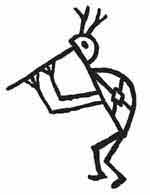
Known to some as a magician, to others he was a storyteller, teacher, healer, trickster, trader, or god of the harvest. Some even credit Kokopelli with being the "original" journalist. Almost universally however, he was regarded as a harbinger of fertility, assuring success in hunting, growing crops, and human conception. The Anasazi, who were first to claim Kokopelli, were primarily farmers who grew corn, beans, and squash on the Colorado Plateau. They regarded Kokopelli as a fertility symbol and he was always welcomed during corn planting season. A visit from Kokopelli insured that a good harvest was in store. According to Navajo legend, Kokopelli was the God of Harvest and Plenty - a benign minor god who brought abundant rain and food to people. The Zuni also regarded him as a Rain Priest, able to make it rain at will.
Others regarded him as a Spiritual Priest with actual healing powers. When Hopi women could not bear children, they would seek him out because he was able to restore their childbearing powers. According to Hopi legend, Kokopelli spent most of his time sewing seed and seducing the daughters of the village while his wife, Kokopelli Mana, ran after the men! The Winnebago believed Kokopelli was capable of detaching his penis (ouch) and sending it down the river to "have his way" with the innocent young maidens who were bathing in the stream.
The lore of southern Utah paints Kokopelli as a little man who used to travel throughout the villages carrying a bag of corn seed on his back, teaching the people how to plant as he traveled. He was also said to have traded beads and shells for pieces of turquoise. Some speculate that this image of Kokopelli may have been derived from traveling traders of the time who announced their arrival by playing a flute as they approached - a tradition that is still practiced in Central America.
Many different legends exist about what Kokopelli actually carried in his sack. In Pueblo myths, he carried seeds, babies, and blankets to offer the maidens he seduced. According to the Navajo, his hump was made of clouds filled with seeds and rainbows. In the Hopi village of Oraibi, they believe he carried deer skin shirts and moccasins which he used to barter for brides or babies which he left with the young women. Others believe that Kokopelli's sack contained the seeds of all the plants and flowers of the world, which he scattered every Spring.
According to San Ildefonso legend, Kokopelli was a wandering minstrel who carried songs on his back, trading new songs for old ones. According to this legend, Kokopelli brought good luck and prosperity to anyone who listened to his songs. Kokopelli embodied everything pure and spiritual about music. He and his magical flute traveled from village to village bestowing gifts and spreading cheer to all whom he visited. His flute was said to symbolize happiness and joy. When he played his flute, the sun came out, the snow melted, grass began to grow, birds began to sing, and all the animals gathered around to hear his songs. His flute music soothed the Earth and made it ready to receive his seed. The magic of his flute was also thought to stimulate creativity and help good dreams come true.
The above information is from Kokoasis who writes: "Our own interest and enthusiasm about Kokopelli started in the fall of 1998 when we discovered him in Arizona. As we have learned more about the legends and lore associated with him, we have incorporated his images (and, indeed, his spirit) in the way we manage our properties."
The magic of his flute was also thought to stimulate creativity and help good dreams come true. Kokopelli has been the inspiration for many to play the flute today. More modern style flutes, such as flutes from Armstrong , are played today by many thanks to this legend.
Kokopelli Store
The Anasazi & Kokopelli
Desert Little Bear's Kokopelli Essay and Art Yaqui/Apache Artist
Kokopelli Image Gallery
Kokopelli Kave
Kokopelli - Trickster God
Kokopelli of Southern Utah
Legends of Kokopelli
On the Trail of Kokopelli
"He of the singing reed, He of the sacred seed, comes to assure the fertility and good fortune of our people." Linda Lay Shuler
- listening party
- existing artist
- See all results
No matching results
Try a different filter or a new search keyword.
Search all Bandcamp artists, tracks, and albums
- artists PRO view site
- edit profile
- subscription subscription
- view collection
- showLinkedBands(!showLinkedBands())" data-test="linked-accounts-header">

Dreams from the Grandfather (Canyon Records Definitive Remaster)
By robert tree cody.
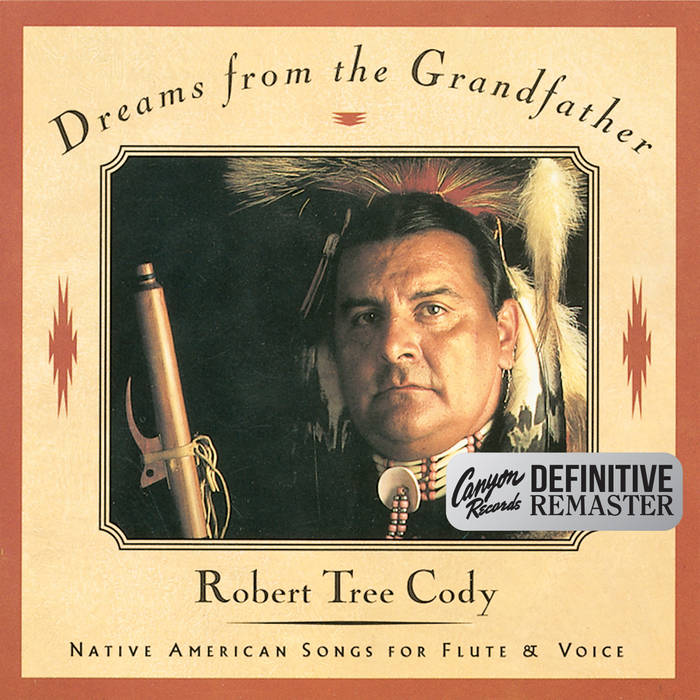
Digital Album Streaming + Download
Buy digital album $10 usd or more, send as gift , share / embed.

Canyon Records Arizona
Canyon Records of Phoenix, Arizona, producer and distributor of Native American music, is one of the oldest independent record labels in the music industry as well as one of the oldest cultural institutions in the state of Arizona.
- canyonrecords.com
discography

contact / help
Contact Canyon Records
Streaming and Download help
Report this album or account
If you like Dreams from the Grandfather (Canyon Records Definitive Remaster), you may also like:

Buile by Roehind
“Buile” uses an electronic backdrop to explore songs old and new from the Celtic tradition. Bandcamp New & Notable Oct 23, 2023

HOME by Sushma Soma
featured on Bandcamp Radio May 23, 2022

VOL.13 Mysterious Realm Of The Sonnestube by Space Age Sunset
featured on Bandcamp Radio Oct 13, 2020

Yoka Boka (For Us All) by Jeff Majors
featured on Bandcamp Radio Jan 8, 2019
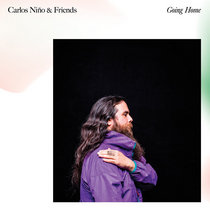
Going Home by Carlos Niño & Friends
The fifth album of Carlos Niño’s “& Friends” series, a definitive six-song odyssey about death and transition. Bandcamp New & Notable Sep 26, 2017
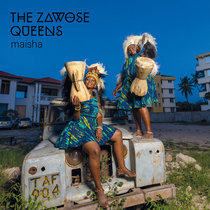
Maisha by The Zawose Queens
featured on Bandcamp Radio Mar 26, 2024

AR02 - PRINCE OSULA - Mystic Herbalist Reggae Movement // Ashwagandha by Prince Osula
featured on Bandcamp Radio Mar 19, 2024
Bandcamp Daily your guide to the world of Bandcamp

The Stories Behind Big Crown Records’ Soulful Singles

Composer Meara O’Reilly Brings Hockets Into the Future

The Merch Table: Samana Give Listeners a Map to Locate an Obelisk Hidden in Wales
On Bandcamp Radio

NAHreally joins the show to discuss his newest release, "BLIP".
- terms of use
- switch to mobile view
Dreams from the Grandfather (Canyon Records Definitive Remaster)
January 1, 1993 11 Songs, 46 minutes ℗ 2015 Canyon Records
More By Robert Tree Cody
Featured on.
Apple Music
Select a country or region
Africa, middle east, and india.
- Côte d’Ivoire
- Congo, The Democratic Republic Of The
- Guinea-Bissau
- Niger (English)
- Congo, Republic of
- Saudi Arabia
- Sierra Leone
- South Africa
- Tanzania, United Republic Of
- Turkmenistan
- United Arab Emirates
Asia Pacific
- Indonesia (English)
- Lao People's Democratic Republic
- Malaysia (English)
- Micronesia, Federated States of
- New Zealand
- Papua New Guinea
- Philippines
- Solomon Islands
- Bosnia and Herzegovina
- France (Français)
- Deutschland
- Luxembourg (English)
- Moldova, Republic Of
- North Macedonia
- Portugal (Português)
- Türkiye (English)
- United Kingdom

Latin America and the Caribbean
- Antigua and Barbuda
- Argentina (Español)
- Bolivia (Español)
- Virgin Islands, British
- Cayman Islands
- Chile (Español)
- Colombia (Español)
- Costa Rica (Español)
- República Dominicana
- Ecuador (Español)
- El Salvador (Español)
- Guatemala (Español)
- Honduras (Español)
- Nicaragua (Español)
- Paraguay (Español)
- St. Kitts and Nevis
- Saint Lucia
- St. Vincent and The Grenadines
- Trinidad and Tobago
- Turks and Caicos
- Uruguay (English)
- Venezuela (Español)
The United States and Canada
- Canada (English)
- Canada (Français)
- United States
- Estados Unidos (Español México)
- الولايات المتحدة
- États-Unis (Français France)
- Estados Unidos (Português Brasil)
- 美國 (繁體中文台灣)
Stream Top Podcasts
Popular podcasts.
The Bright Side
Start your day with The Bright Side, a new daily podcast from Hello Sunshine. Co-hosted by journalist, TV host, and podcaster, Danielle Robay and Emmy-nominated journalist, host, and producer, Simone Boyce, The Bright Side brings your daily dose of culture and inspiration – with the latest trends, celebrity interviews, and real conversations with women doing amazing things while navigating life’s transitions, big and small. The Bright Side is a talk show created to inspire, educate, and empower women as they tackle life each day and add joy to their morning routines. Join Danielle and Simone and the Hello Sunshine community every weekday for entertainment, culture, wellness, books, and more.
Ways To Win
Winning is an everyday mindset, and the coaches are here to help. Hosts Craig Robinson and John Calipari use their on-court wisdom to solve your off-court problems. Hosted on Acast. See acast.com/privacy for more information.
Dateline NBC
Current and classic episodes, featuring compelling true-crime mysteries, powerful documentaries and in-depth investigations.
Featured Podcasts
Serial returns with a history of Guantánamo told by people who lived through key moments in Guantánamo’s evolution, who know things the rest of us don’t about what it’s like to be caught inside an improvised justice system. Serial Productions makes narrative podcasts whose quality and innovation transformed the medium. “Serial” began in 2014 as a spinoff of the public radio show “This American Life.” In 2020, we joined the New York Times Company. Our shows have reached many millions of listeners and have won nearly every major journalism award for audio, including the first-ever Peabody Award given to a podcast. Subscribe to our newsletter for the latest Serial Productions news: https://bit.ly/3FIOJj9 Have thoughts or feedback on our shows? Email us at [email protected]
On Tuesday's and Friday’s The Moth’s podcast feed presents episodes of the Peabody-Award Winning Moth Radio Hour and original episodes of The Moth Podcast. Since its launch in 1997, The Moth has presented thousands of true stories, told live and without notes, to standing-room-only crowds worldwide. Moth storytellers stand alone, under a spotlight, with only a microphone and a roomful of strangers. The storyteller and the audience embark on a high-wire act of shared experience which is both terrifying and exhilarating. Since 2008, The Moth podcast has featured many of our favorite stories told live on Moth stages around the country. For information on all of our programs and live events, visit themoth.org.
Imagine you were a fly on the wall at a dinner between the mafia, the CIA, and the KGB. That’s where this unprecedented story begins. A journey through the dark world of Russian intelligence where, for the first time, a professed “sex spy” tells her story. All of it. Host Neil Strauss (Rolling Stone, The New York Times) brings listeners into the dangerous world of sexpionage, where enemies of the State are not the only victims. So too are the spies themselves, brainwashed to believe that their bodies belong to Russia and meticulously trained to become “the perfect weapons.” Who is Aliia Roza? From the creators of the hit podcast series To Live and Die in LA, this is To Die For. Binge all 8 episodes now.
iHeart Podcast Networks .css-1q01m3q{margin:0 0 -2px 0;}
© 2024 iHeartMedia, Inc.
- Privacy Policy
- Terms of Use

The Legend of Kokopelli
Kokopelli has appeared in Native American stories for more than 3000 years. He is often depicted as playing a flute and having a humpback or pack on his back. He is known as a fertility deity, often with an oversized phallus and feathers or antenna-like protrusions on his head.
Kokopelli’s Humpback Some believe that Kokopelli’s humpback evolved from a sack that was slung over his shoulder that caused his back to bend. What was contained in his sack varies among different Native American tribes.
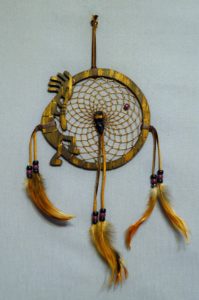
In Pueblo mythology, Kokopelli is depicted as carrying seeds, babies, and blankets in his hump and offered them to the maidens of the village. Kokopelli is also a wandering minstrel with a sack of songs on his back who trades old songs for new ones.
In the Navajo traditions, Kokopelli’s hump was filled with clouds, seeds, and rainbows. He was a minor god of hope and plenty and brought forth seeds and food to the people.
The Hopi believed Kokopelli’s hump carried deer skins, shirts, and moccasins which he used to barter for brides or babies to give to the young women of the village. The Hopi also believed Kokopelli carried all the seeds of the world which he scatters on the ground every Spring as he travels from village to village.
The Anasazi saw Kokopelli as a fertility spirit during corn planting season. A visit from Kokopelli assured a plentiful crop season.
To the Zuni Kokopelli was a rain god and a spiritual priest with healing powers.
Many tribes believed Kokopelli carried songs on his back while his flute playing brought happiness and joy. His magical music can also make the sun come out to listen and soothe the earth to make it fertile for planting. His songs could also inspire creativity, make good dreams come true, and bring good luck and prosperity to those who deserve it. Kokopelli was generally welcomed wherever he went.
Kokopelli is also thought to be a trickster. He tricks the most beautiful girl in the village into having sex with him. Some believe the Trickster figure as a sort of important cultural “release valve.” Kokopelli is also associated with a traveling salesman, insect, musician, warrior, and hunting magician.
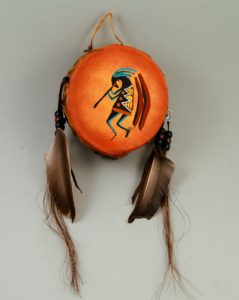
Kokopelli and the Corn Seed Featured prominently in ancient Native American stories is the legend of Kokopelli, a humpback flute player. Kokopelli made musical sounds with his flute and gave happiness to those around him.
In one story a great serpent appeared to Kokopelli and gave him sacred seeds of corn. Kokopelli ate most of the corn, which was then stored in the hump of his back and transformed him into an insect. The rest of the corn seeds which Kokopelli did not eat became scattered before him.
As he played his flute, the corn seeds danced about and traveled throughout the village and were captured by some of the people. Some of the seeds were taken away by the wind. But one seed settled into the ground and grew to be a great corn stalk.
Kokopelli appeared by the giant corn stalk and continued playing his flute as he started climbing the tall corn stalk.
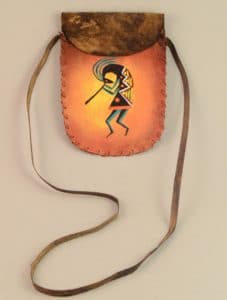
Some people who did not capture the airborne seeds followed Kokopelli up the corn stalk. As they climbed the corn stalk, it disappeared below them into the inner most world.
The others who had seeds remained behind and became the inner world kachinas (Kachinas were spirits in the mythology of Native American culture, especially among the Pueblo people).
The people journeyed from the first inner world to the second and third inner world.
Meanwhile, Kokopelli guided the people following him into the fourth world. In this world the corn seeds stored in Kokopelli’s hump were planted and corn is now passed back and forth between the worlds.
Many believe this story was a way of showing the transitioning of Native American society from a nomadic existence to an agricultural and community-based society.
The Kokopelli image is found throughout the southwest on pottery, carvings, jewelry, and paintings. He is probably the best known Native American image.
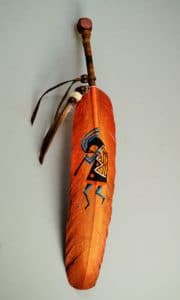
At Southwest Arts and Design the Kokopelli image is reproduced on a variety of items, such as Hand Painted Feathers , Painted Drum , Wood Dream Catcher , and Leather Medicine Bag .
Spotify is currently not available in your country.
Follow us online to find out when we launch., spotify gives you instant access to millions of songs – from old favorites to the latest hits. just hit play to stream anything you like..

Listen everywhere
Spotify works on your computer, mobile, tablet and TV.

Unlimited, ad-free music
No ads. No interruptions. Just music.

Download music & listen offline
Keep playing, even when you don't have a connection.

Premium sounds better
Get ready for incredible sound quality.
April 7, 2024

Growing up in New Mexico was a blessing in many, many ways. One of the most important things that I gained while living there was cultural diversity and understanding. Kokopelli is one of the many legends that I was taught while living there.
The town I was born in, Grants, is situated between several Native American tribes, all of which have their own legends revolving around Kokopelli.
Kokopelli is one of the most intriguing and widespread images surviving from ancient Anasazi Indian culture. He is depicted as a humpbacked flute player, and is widely believed to bring well-being to the people. He was the one who would change the seasons and bring about a good harvest.
Many cultures have their own interpretation of Kokopelli. Known to some as a magician, to others he was a storyteller, teacher, healer, trickster, trader, or god of the harvest. Some even credit Kokopelli with being the “original” journalist.
Almost universally however, he was regarded as a harbinger of fertility, assuring success in hunting, growing crops, and human conception.
The Anasazi, who were first to claim Kokopelli, were primarily farmers who grew corn, beans, and squash on the Colorado Plateau. They regarded Kokopelli as a fertility symbol and he was always welcomed during corn planting season. A visit from Kokopelli insured that a good harvest was in store.
According to Navajo legend, Kokopelli was the God of Harvest and Plenty - a benign minor god who brought abundant rain and food to people. The Zuni also regarded him as a Rain Priest, able to make it rain at will. Others regarded him as a Spiritual Priest with actual healing powers. Many different legends exist about what Kokopelli actually carried in his sack. In Pueblo myths, he carried seeds, babies, and blankets.
According to the Navajo, his hump was made of clouds filled with seeds and rainbows.
Others believe that Kokopelli’s sack contained the seeds of all the plants and flowers of the world, which he scattered every Spring.
According to San Ildefonso legend, Kokopelli was a wandering minstrel who carried songs on his back, trading new songs for old ones. According to this legend, Kokopelli brought good luck and prosperity to anyone who listened to his songs.
Kokopelli embodied everything pure and spiritual about music. He and his magical flute traveled from village to village bestowing gifts and spreading cheer to all whom he visited.
His flute was said to symbolize happiness and joy. When he played his flute, the sun came out, the snow melted, grass began to grow, birds began to sing, and all the animals gathered around to hear his songs. His flute music soothed the Earth and made it ready to receive his seed. The magic of his flute was also thought to stimulate creativity and help good dreams come true.
The story that has stuck with me the most, and the one I heard all the time growing up, was the story of Sky City.
Sky City is a village on the Acoma Pueblo and is regarded as the oldest, continuously inhabited community in the United States. It’s built on a 300-foot-high mesa, and its believed this was for protection against invaders.
The faces of the mesa are sheer, and before modern times, the only way up or down was by a rock staircase that hads been carved into the face of the mesa.
In the late 1500’s the Spanish Crown began ordering conquest expeditions into the territories of the Pueblo Peoples, one of which was Acoma.
For several days the Acoma were able to hold off the Spanish conquistadors. But the the village was running out of food, and they were beginning to starve.
During the night, it is said that Kokopelli showed himself on the mesa, playing his flute. As he played, the children awoke, and ran outside. Kokopelli turned them all into butterflies and they flew off the mesa, to the top of the neighboring mesa.
The Spanish invaded the next day. Don Juan De Oñate, the conquistador in charge of the invasion, ordered for every man above the age of 25 to have his right foot cut off, then be sold into slavery. Several hundred Acoma natives were killed in the massacre.
But as legend has it, Kokopelli saved the children of the village, and every butterfly that is seen atop the mountain is blessed by Kokopelli himself.

Dreams from the Grandfather (Canyon Records Definitive Remaster)
Robert Tree Cody
11 SONGS • 46 MINUTES • FEB 17 2015

COMMENTS
Provided to YouTube by A-Train EntertainmentKokopelli Wandering Song · Robert Tree CodyDreams from the Grandfather - Native American Songs for Flute and Voic...
Provided to YouTube by A-Train Entertainment Kokopelli Wandering Song · Robert Tree Cody Dreams from the Grandfather (Canyon Records Definitive Remaster) ...
Kokopelli and Kokopelli Mana as depicted by the Hopi. Kokopelli (/ ˌ k oʊ k oʊ ˈ p ɛ l iː /) is a fertility deity, usually depicted as a humpbacked flute player (often with feathers or antenna-like protrusions on his head), who is venerated by some Native American cultures in the Southwestern United States.Like most fertility deities, Kokopelli presides over both childbirth and agriculture.
Listen to Kokopelli Wandering Song from Robert Tree Cody's Dreams From The Grandfather - Native American Songs For Flute And Voice for free, and see the artwork, lyrics and similar artists.
According to San Ildefonso legend, Kokopelli was a wandering minstrel who carried songs on his back, trading new songs for old ones. According to this legend, Kokopelli brought good luck and prosperity to anyone who listened to his songs. Kokopelli embodied everything pure and spiritual about music. He and his magical flute traveled from ...
Provided to YouTube by CDBabyKokopelli's Wandering Song · John PelleyA Day With Kokopelli℗ 2008 John PelleyReleased on: 2008-01-01Auto-generated by YouTube.
Kokopelli Wandering Song 3. In Camps of Times Past 4. Whispering Journeys 5. Zuni Dawn 6. Sky City 7. Moonlight Dance 8. Lakota Lullaby 9. Love Song 10. Buffalo's Journey 11. Stomp Dance Robert Tree Cody intertwines his solo vocal interpretations with soothing flute rhapsodies. These eleven songs draw on his Dakota-Maricopa heritage as well as ...
Lyrics & Chords of Kokopelli Wandering Song by Robert Tree Cody, 1.5K times played by 227 listeners - get pdf, listen similar
Listen to Kokopelli Wandering Song on Spotify. Robert Tree Cody · Song · 1993. Robert Tree Cody · Song · 1993 ... Listen to Kokopelli Wandering Song on Spotify. Robert Tree Cody · Song · 1993. Home; Search; Your Library. Create your first playlist It's easy, we'll help you. Create playlist. Let's find some podcasts to follow We'll keep ...
Stream songs including "Earth Mother", "Kokopelli Wandering Song" and more. Listen to Dreams from the Grandfather (Canyon Records Definitive Remaster) by Robert Tree Cody on Apple Music. Stream songs including "Earth Mother", "Kokopelli Wandering Song" and more. Album · 1993 · 11 Songs.
Native American multi-instrumentalist Robert Tree Cody was a global performer known for his impeccable skills of communicating through words, music, art, and education. He performed all over the world and was a regular face in the pow-wow scene as a traditional dance professional. Cody was of Maricopa-Dakota descent, making his way in education ...
Create and get +5 IQ. [Verse] A#m7 Gdim7 F#dim7 I'm the Kokopelli in the cave A#m7 G#6sus2 When I'm in the mood I like to play A#m7 G#dim7 Gdim7 Bend a couple rules and misbehave A#m7 [Fdim7] A#7sus4 Welcome to my twisted cabaret [Chorus] D#m7 F7 Where music touches me Fm7 When you're choosing Fdim7 Keep shuffling D#m7 F7 Because tuneage beats ...
Image Title, Format Label - Catalog Number Country Year In Your Collection, Wantlist, or Inventory
In Pueblo mythology, Kokopelli is depicted as carrying seeds, babies, and blankets in his hump and offered them to the maidens of the village. Kokopelli is also a wandering minstrel with a sack of songs on his back who trades old songs for new ones. In the Navajo traditions, Kokopelli's hump was filled with clouds, seeds, and rainbows.
According to San Ildefonso legend, Kokopelli was a wandering minstrel who carried songs on his back, trading new songs for old ones. According to this legend, Kokopelli brought good luck and prosperity to anyone who listened to his songs. Kokopelli embodied everything pure and spiritual about music. He and his magical flute traveled from ...
Listen to Kokopelli Wandering Song on Spotify. Robert Tree Cody · Song · 1997. Home; Search; Your Library. Playlists ...
Discover Robert Tree Cody's top songs & albums, curated artist radio stations & more. Listen to Robert Tree Cody on Pandora today! Now Playing; My Collection ... Play Kokopelli Wandering Song. Kokopelli Wandering Song. 4:06. more. 3. Play In Camps of Times Past. In Camps of Times Past. 5:55. more. 4. Play Whispering Journeys. Whispering ...
Dreams from the Grandfather (Canyon Records Definitive Remaster) Album • Robert Tree Cody • 1993. 11 songs • 46 minutes. Play. Save to library. 1. Earth Mother. 55K plays. 5:09.
Provided to YouTube by CDBabyKokopelli's Wandering Song (Reprise) · John PelleyA Day With Kokopelli℗ 2008 John PelleyReleased on: 2008-01-01Auto-generated by...
View credits, reviews, tracks and shop for the 1993 CD release of "Dreams From The Grandfather" on Discogs.
According to San Ildefonso legend, Kokopelli was a wandering minstrel who carried songs on his back, trading new songs for old ones. According to this legend, Kokopelli brought good luck and prosperity to anyone who listened to his songs. Kokopelli embodied everything pure and spiritual about music. He and his magical flute traveled from ...
Listen to your favorite songs from Dreams from the Grandfather (Canyon Records Definitive Remaster) by Robert Tree Cody Now. Stream ad-free with Amazon Music Unlimited on mobile, desktop, and tablet. Download our mobile app now.